Did you know that tubers rather than seeds are used for potato propagation? To get a good harvest, you need healthy planting material. And also important is the choice of a suitable potato variety.
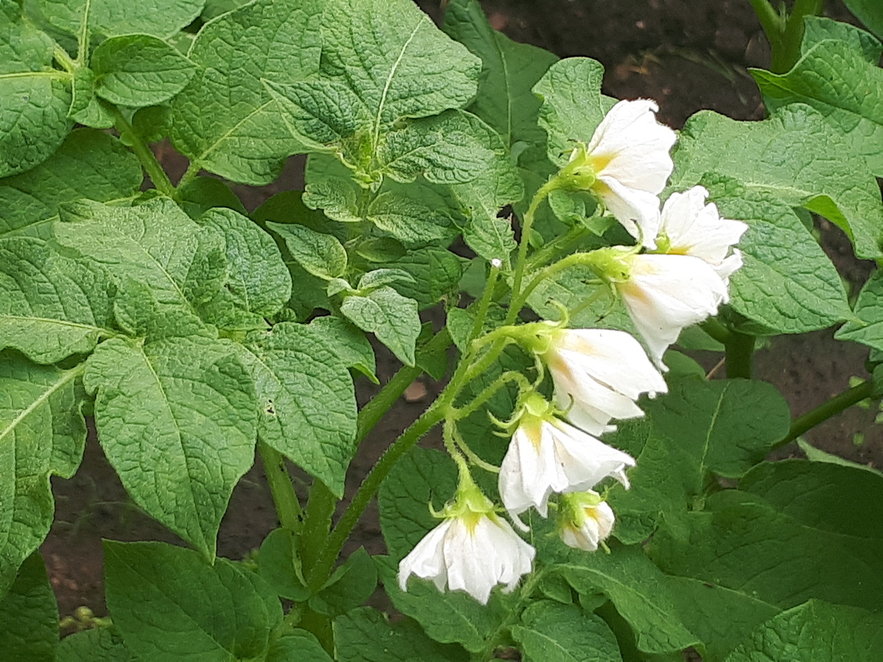
Content
About the choice of material for planting
The selection scale for varieties is very wide, so you need to focus on the main criteria:
- Growing region. Each potato variety is bred by breeders for a specific climatic zone. Optimally matched material with good care guarantees a good harvest. For example, an early variety is good in the southern regions, but is completely unsuitable for cultivation in the northern region. There are universal species that give good harvests in any region of Russia. Among them: mid-early Nevsky and Good luck.
- The type of soil is important for the cultivation of some species.
- Root crops should have numerous small eyes, which will give shoots and a large yield.
- Strong immunity to viruses and diseases.
- For best results, the tubers should be medium sized 50-90 grams.
- Ripening terms: early, middle and late.
- Of great importance for the choice is color, taste, size. The red color is sensitive to rot. The purple-red tubers contain anthocyanin, which is considered an antioxidant. Less yielding, but more resistant to viruses are varieties with white and yellow skin. The latter, in the composition, contain carotene, which has a positive effect on vision.
- When purchasing elite varieties for planting, you need to make sure that they have a quality certificate.
Seed farms in Russia are constantly engaged in the selection of new types of potatoes. This process is time consuming and labor intensive. The assortment is constantly updated, as the available varieties tend to degenerate quickly.
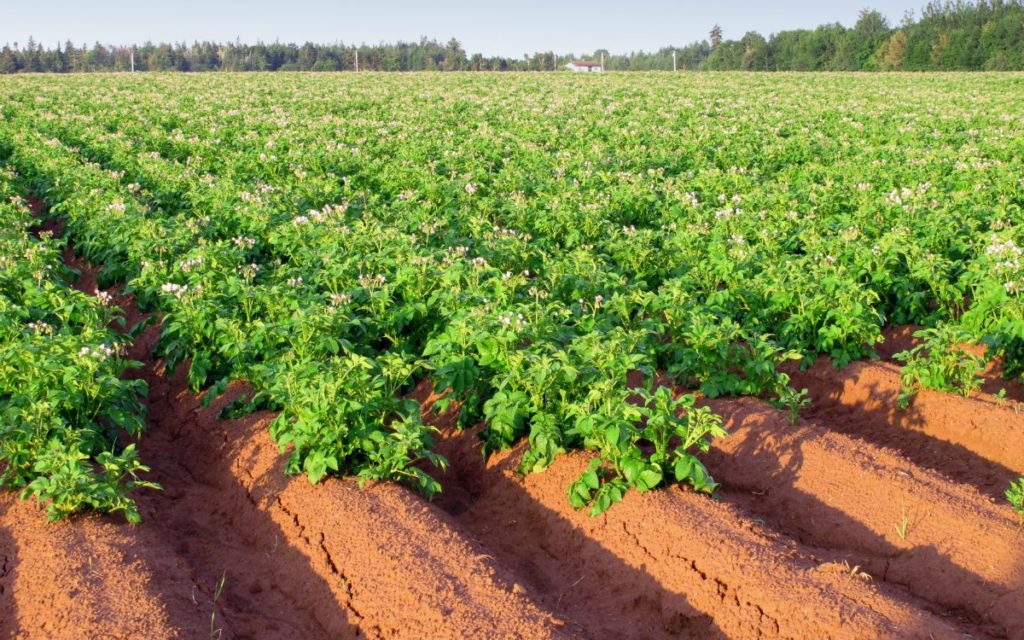
Different varieties
When growing potatoes on an industrial scale, its purpose is of no small importance. Varieties are distinguished by their% starch content: table, technical, feed, universal.
The use of the product depends on the amount of starch content. For frying - suitable with a lower content, and for cooking - vice versa.
Potato varieties are divided according to ripening periods:
- early maturing - 70-80 days;
- mid-early - 80-90;
- mid-season - 90-110;
- medium late - 110-120;
- late - 120-140.
The earliest harvest is obtained in the Krasnodar Territory in late May and early June.
For planting, you should choose high-quality, with strong immunity to pests, seed material. It is believed that varieties of domestic selection have increased resistance to diseases, and imported ones do not get sick with potato nematode.
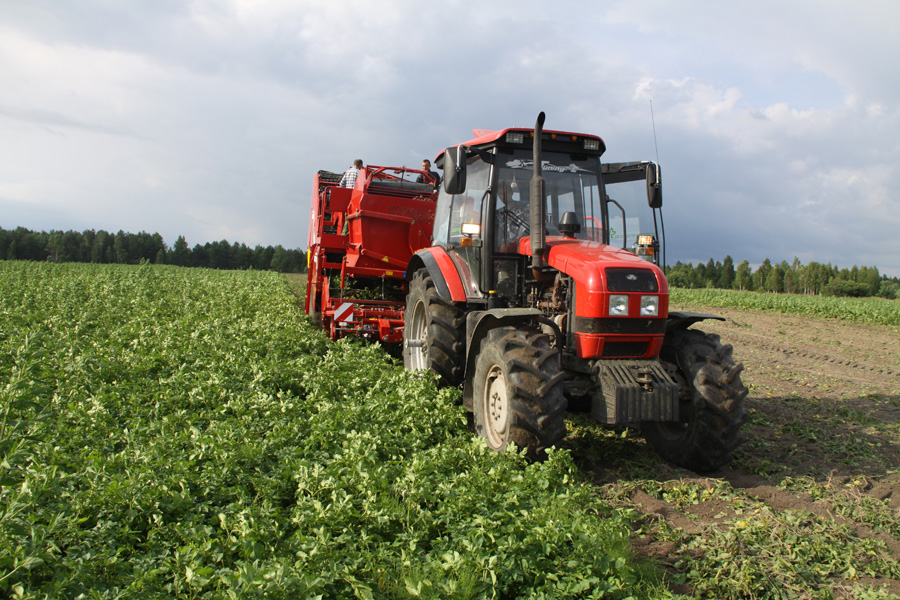
Varieties that are resistant to pest and disease:
- Colorado potato beetle: Pomegranate, Lasunak, Ogonyok, Temp, Loshchinsky, Crystal.
- Nematoda: Odysseus, Juliana, Amadeus, Agrius, Sante, Zhukovsky, Latuna.
- Cancer: Lukyanovsky, Adretta, Detkoselsky, Priekulsky.
- Scab: Bryansk novelty, Berlichingen, Detkoselsky.
- Late blight: Gatchinsky, Luck, Lina, Nikulinsky, Olev, Temp.
Where to buy seed
It is better to do this at agricultural exhibitions, in specialized stores. It is possible that the price there will be higher, but this gives a guarantee of quality.
Seed material:
- Elite.This species is intended for growing seedlings of tubers.
- The first reproduction - the cost is much less than the elite, it is profitable to purchase it for planting on a personal plot. With the right choice, a change of variety can be carried out only after 4-6 years.
There is a second reproduction - a derivative of the first, it costs even less. All subsequent derivatives are more susceptible to various diseases.
Earliest varieties
The advantage of such potatoes is their resistance to diseases, they do not have time to get infected. The disadvantage of this type is its short shelf life - about 5 months.
Luck
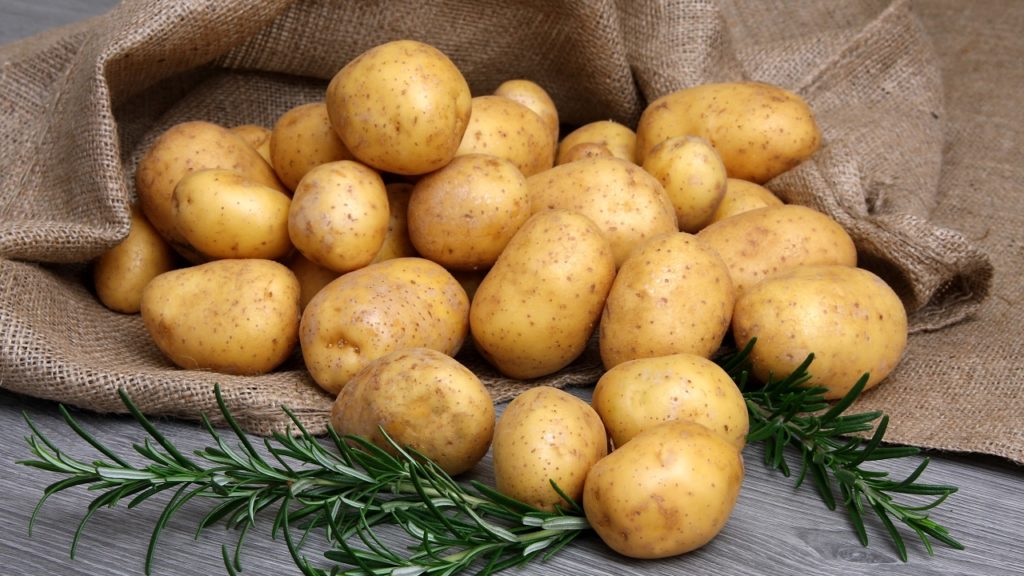
The variety was obtained in the potato farm named after. Lorkha in the suburbs. It was entered into the State Register in 1994. This species is good because it is suitable for planting in any region of Russia. Planted in mid-spring (in the south of the country), young potatoes can be tasted in 45 days. Fully ripening occurs after 60 days. It is recommended to plant after warming up the soil.
Luck lives up to its name - with quality care, the yield from one bucket increases 25-30 times. The variety can withstand any weather: torrential rains and drought, resistant to fungal and other diseases, does not degenerate for a long time, has the ability to reproduce. Light sandy roots with snow-white pulp are well stored, not subject to rot. The amount of starch is up to 12%, does not boil during cooking, has a delicate taste.
Advantages:
- suitable for any region and soil;
- small eyes;
- moderate susceptibility to late blight;
- high productivity.
Disadvantages:
- possible defeat by a nematode and a Colorado potato beetle.
Zhukovsky early
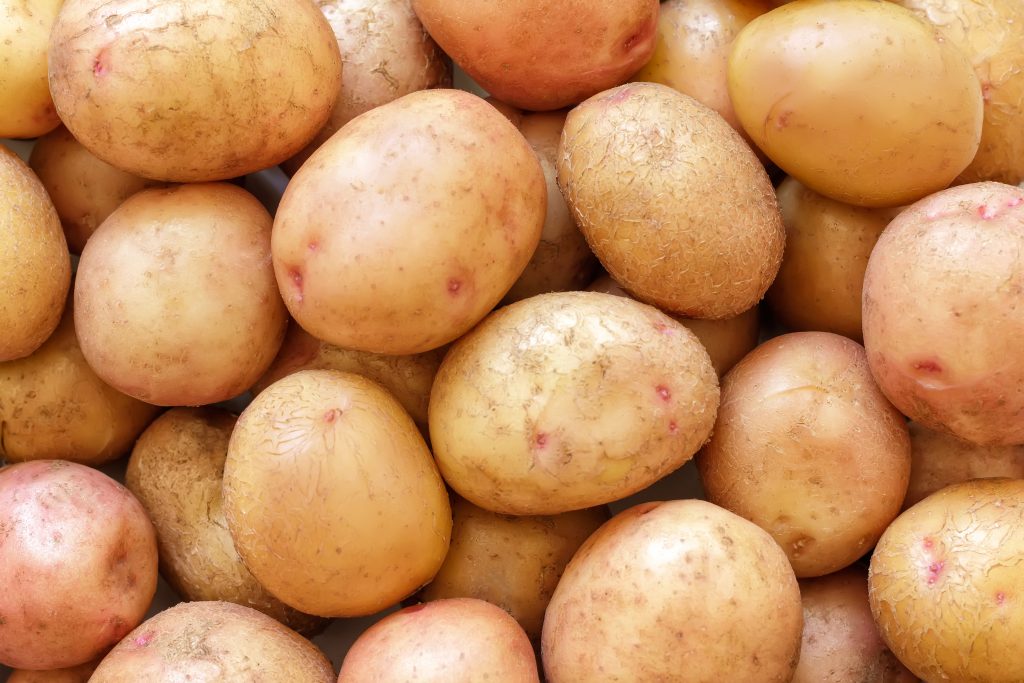
Early ripening, the first roots can be dug out after 40-45 days. Final ripening occurs after 65 days. This species is also domestic, in the State Register since 1993. A table culture with excellent taste and a small% starch content, therefore remains firm after cooking. The skin is pink, the flesh is white.
The culture can be grown in the regions of Siberia and the North-West.
Advantages:
- stored for a long time;
- resistant to many infections.
Disadvantages:
- may be susceptible to late blight.
Ariel

Ultra early variety from the Dutch selection. Ripening occurs in 45-50 days, during this period the plant does not have time to get sick with some kind of infection. The type of potato is adapted for cultivation in small subsidiary plots. In the southern regions, you can get 2-3 crops per season. The species is drought-resistant, prefers fertile soil based on chernozem and sand.
The size of the tubers is up to 55 mm, the starch is up to 18%, the yellow pulp does not darken during processing.
Advantages:
- early harvest;
- rarely gets sick.
Disadvantages:
- affected by a nematode.
Impala

An early ripe variety, popular among agronomists in Russia, Ukraine and Belarus. The culture was bred in Holland, and Russian scientists participated in the work on zoning and improving the characteristics. The Impala appeared in the State Register in 1995.
Potatoes are not picky about climatic conditions, they are drought-resistant. In the southern regions, up to two harvests are harvested, after 40-45 days the first tubers ripen, yellow in color with light yellow pulp. Starch content 15%. Root crops are well stored.
Advantages:
- suitable for cultivation in any area;
- not susceptible to many diseases.
Disadvantages:
- there is no immunity to late blight and rhizoctonia.
Rosara

The table species was obtained by German breeders, zoned by Russian research institutes, adapted for cultivation in the middle lane, in the Far East, in Siberia, Belarus, not picky about the type of soil. The yield from one hundred square meters reaches 500 kg. Tubers with a thin pink-red skin and yellow flesh.
The crop does not lose its properties during long-term storage. Rosara is unique in that he is not susceptible to any disease. 5 years, the planting material may not be renewed.
Advantages:
- almost 100% safety;
- disease resistance;
- low percentage of starch.
Disadvantages:
- not found
Bellarosa

The culture of German breeders, the variety is quite new, in the State Register of Russia since 2016. Potatoes are adapted to any temperature extremes and droughts, table variety. Recommended for planting in the Central region and the Urals, not picky about the quality of soil, acidity. The plant is high-yielding: 1.5 kg can be harvested from one bush.
Tubers are red in color and light yellow friable flesh, they are well stored, not subject to rot.
Advantages:
- good taste;
- high-quality, proven variety;
- not picky about the soil;
- does not get sick.
Disadvantages:
- not.
Mid-season varieties
The growing period is 112-130 days. Potatoes retain all characteristics well until spring and have a high yield.
Adretta

Bred several decades ago in Germany, adapted for cultivation in central Russia. In the State Register since 1980. Potatoes are still the best in terms of taste, the amount of starch is up to 18%. When boiled, it has a crumbly structure. From one hundred square meters, the yield reaches 450 kg.
The tubers have a long shelf life, even after freezing, the potatoes do not acquire a sweetish taste. The species is resistant to cancer and viruses, not affected by scab, late blight, rhizoctonia.
Advantages:
- high taste;
- adaptability to any weather conditions;
- good keeping quality.
Disadvantages:
- affected by some diseases.
Nevsky

The variety was bred by scientists of the Leningrad Research Institute of Agriculture in the 70s of the last century. Until now, potatoes are not inferior to the quality characteristics of new selection. Nevsky is high-yielding - up to 600 kg from one hundred square meters. The culture can be grown in any region, it is not picky about the soil, it is drought-resistant. On hot days, the leaves of the plant roll up into a tube to retain moisture. Nevsky is almost not sick. The tuber skin is light yellow with small eyes and white flesh. Full ripening period: 70-85 days.
When boiling, tubers do not boil over, and peeled tubers do not darken, as they have a low starch content. Nevsky is stored for a long time, resistant to rhizoctoniozone, to late blight - moderate perception.
Advantages:
- high yield;
- drought resistance;
- raw, peeled potatoes do not darken;
- does not get sick.
Disadvantages:
- fast germination of eyes.
Aurora

Russian variety, in the State Register since 2006. The popular name is "red-eyed". Productivity from one hundred square meters to 400 kg. After 3 months, the first roots ripen. The skin of the tubers is pink-brown, the flesh is creamy. The culture is unpretentious to any change in weather conditions.
Root vegetables with good taste, suitable for mashed potatoes, smooth, easy to clean, the eyes are barely visible, and there are few of them. The harvest is well stored until spring.
Advantages:
- excellent taste;
- drought resistant;
- not susceptible to disease.
Disadvantages:
- not.
Tuleyevsky

The potato variety was created at the Kemerovo Research Institute, named after Aman Tuleyev. In the State Register since 2006. Zoned for planting in the Volgo-Vyatka, Far Eastern regions and regions of Siberia. Full maturation occurs on day 110. With high-quality care, up to 400 kg are collected from one hundred square meters. Sandy root vegetables, have excellent taste and are used to prepare various dishes. Contains 15% starch.
Tuleyevsky has a stable immunity to diseases. Not picky about the type of soil. Keeping up to 90%.
Advantages:
- high yield;
- not picky about climatic and soil conditions;
- excellent taste;
- long-term storage.
Disadvantages:
- susceptible to nematode.
Late varieties of potatoes
The growing season of this type lasts 4.5 months and provides a high yield. Late varieties contain an increased amount of starch and protein, which affects the taste. This culture is usually grown on an industrial scale.
Lorch
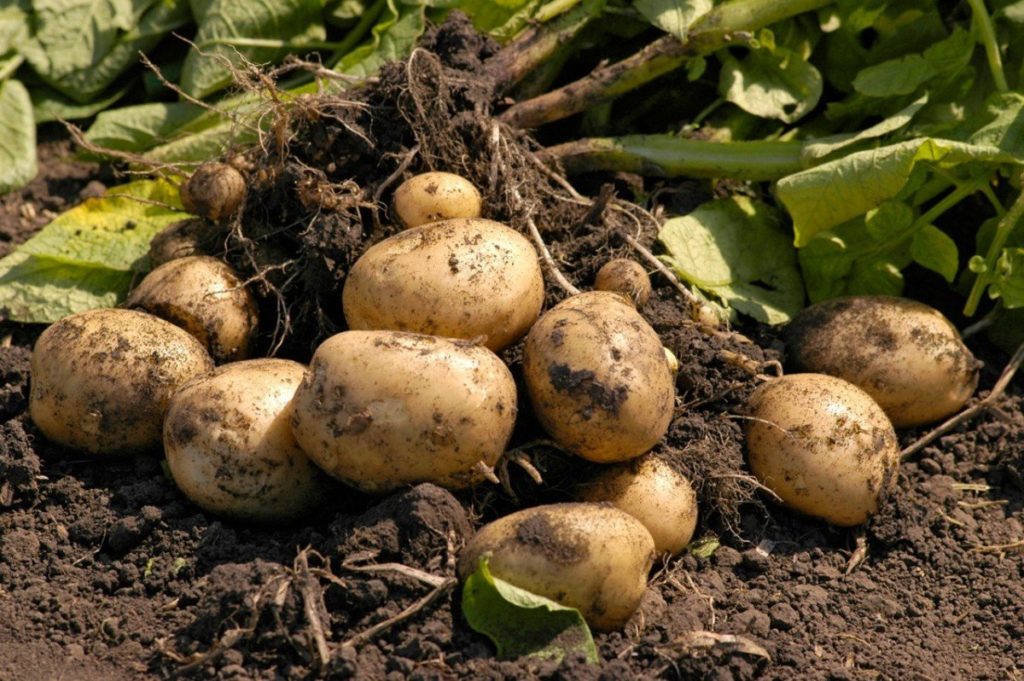
The representative of the first Soviet selection is named after its author - Doctor of Agricultural Sciences, Professor A.G. Lorkha.Work on the breeding of the variety was carried out in the 20s of the last century, and for a long time it held the first positions of agricultural vegetable crops.
Potatoes are adapted to any soil and climatic conditions. One bush can yield up to 350-400 kg. Root crops are smooth with white pulp and good taste. Starch content up to 20%. Potatoes reach technical ripeness in 80-100 days.
Advantages:
- high-quality, proven variety;
- resistant to any weather conditions;
- does not get sick;
- good keeping quality;
- used for the production of starch.
Disadvantages:
- not detected.
Asterix
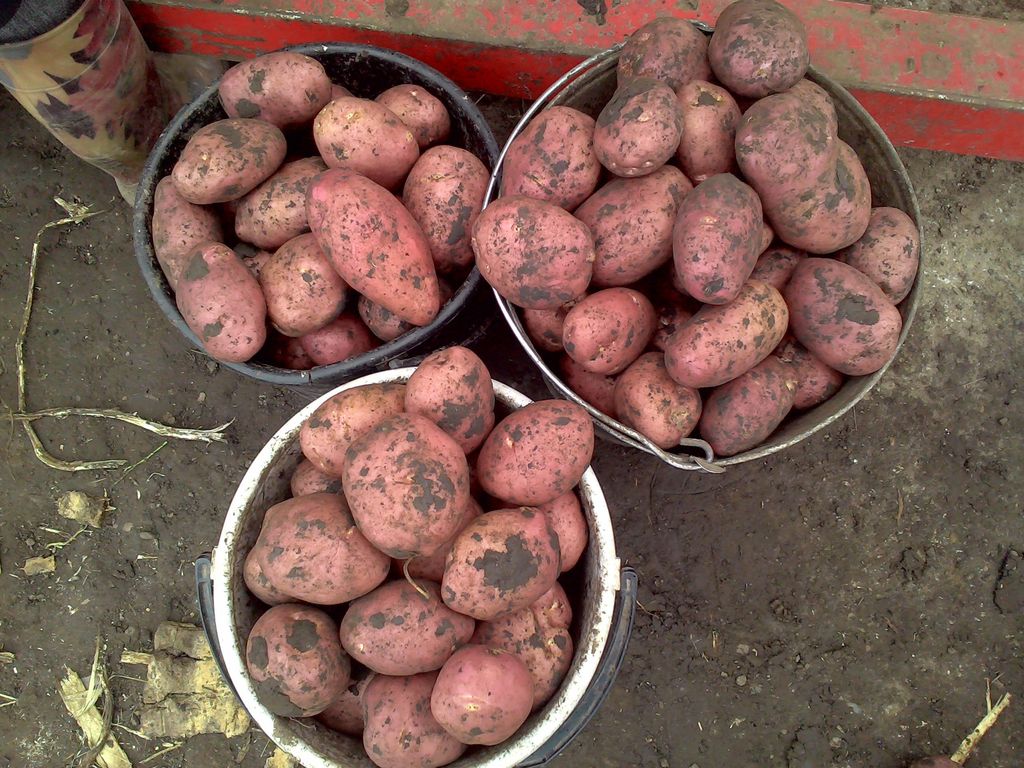
An elite variety of Dutch breeders. The culture is adapted for cultivation in the Middle Volga region and the Far East. Tubers are red in color with small eyes, the flesh is light yellow, does not change color during processing. Good-tasting potatoes, used to make chips and fries.
The crop is stored until spring without the formation of shoots, the variety is resistant to various infectious diseases.
Advantages:
- excellent taste characteristics;
- long-term storage;
- does not get sick;
- drought resistance.
Disadvantages:
- not found.
Zhuravinka

This species was bred by Belarusian scientists, crossing the Dutch and Polish varieties. Round red roots with yellow flesh. Up to 20 medium-sized tubers grow on one bush. Delicious potatoes with a high starch content, used for cooking various dishes, do not boil over and do not change color.
Zhuravinka does not change its qualities during storage, does not become sweet when frozen. Lightness 95%.
Advantages:
- high productivity;
- storage duration;
- resistance to many viruses;
- not affected by temperature drops.
Disadvantages:
- optimum humidity is required;
- sensitivity to late blight.
Picasso
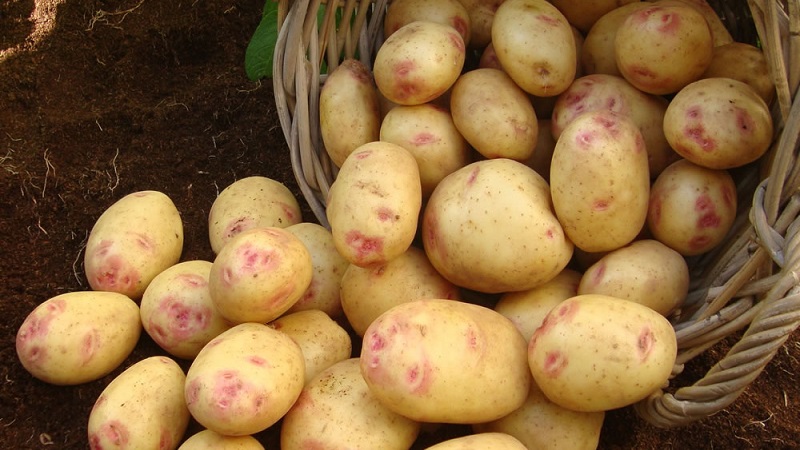
Dutch selection, well-proven. In the State Register since 1995. Round root crops of unusual yellow color with red shades with cream-colored flesh and good taste. The starch content is small, so it does not boil during cooking. Ripening - after 120 days.
The culture is not demanding for drought and excess moisture. Tubers are well stored until spring, do not germinate. Potatoes are not susceptible to scab, viruses, nematodes. Many gardeners prefer to grow it, as it grows on poor soils, the bushes are compact.
Advantages:
- long-term storage;
- ease of care;
- does not get sick;
- low starch content.
Disadvantages:
- prone to phytophthora.
Wind

The table type was obtained by the agronomists of Belarus. In the State Register since 2002. Oval tubers with yellow flesh. Starch content up to 19%, suitable for cooking in any form. The crop is preferably grown in the Central Region. Tubers and tops are resistant to various diseases, immunity to late blight is weakened. The term for growing is 110 days.
Advantages:
- is the standard for comparison with other varieties;
- high starch content.
Disadvantages:
- limited to the growing area.
When choosing potatoes for planting, pay attention not only to the appearance. Consider all the recommendations given in the article - this will help you make the right choice and get the desired harvest!












